
| Production Output | 0.1-2 t/h |
| Power | Electric motor or diesel engine |
| Voltage | 110-415V |
| Raw Materials | Cereal, corn, wheat, soybean, etc |
| Type | flat die type |
| Final pellet size | 2.0 – 5.0 mm |
| Used For | pig feed |
| Brand | Victor |
pig feed pellet mill: High-temperature sterilization and high-starch gelatinization
As a specialized model within our versatile animal feed pellet mill series, the pig feed pellet machine is specifically developed for modern pig farms. It aims to simultaneously enhance biosecurity and reduce the feed conversion ratio (FCR).
Utilizing friction-induced heat (no steam boiler required) to convert mash into high-density pellets, effectively reducing Feed Conversion Ratio (FCR) by ~0.2 and neutralizing pathogens like Salmonella.
Why must pig farms use specialized pellet mills?
1. Friction-Induced Thermal Processing (No Steam Boiler Needed)
Unlike complex ring die systems that require expensive external steam sources, our machine utilizes Advanced Friction-Induced Heat.
- The Mechanism: The precise gap (0.1mm – 0.3mm) between the roller and die generates intense pressure, naturally raising the pellet temperature to 60°C – 80°C.
- Sterilization: This temperature effectively eliminates Salmonella and E. coli, significantly reducing diarrhea rates in piglets.
- Digestion: It achieves 45%-50% Starch Gelatinization, making corn and soybean meal easier for pigs to digest, directly lowering your FCR.
2. Significant Reduction in Feed Waste
Traditional powdered feed causes 5%-8% waste due to dust and moisture absorption. Our high-density pellets (Powdering rate <3%) prevent pigs from being picky eaters, ensuring every gram of feed turns into meat.
3. Improving Starch Gelatinization: Adapting to the Monogastric Digestive System of Pigs
As monogastric animals, pigs digest cooked starch much more efficiently than untreated raw starch.
The high temperature and pressure during pelleting can increase the starch gelatinization of raw materials such as corn and soybean meal to 40%-60%, enhancing palatability and improving energy utilization, directly contributing to the production goal of reducing the feed conversion ratio (FCR).
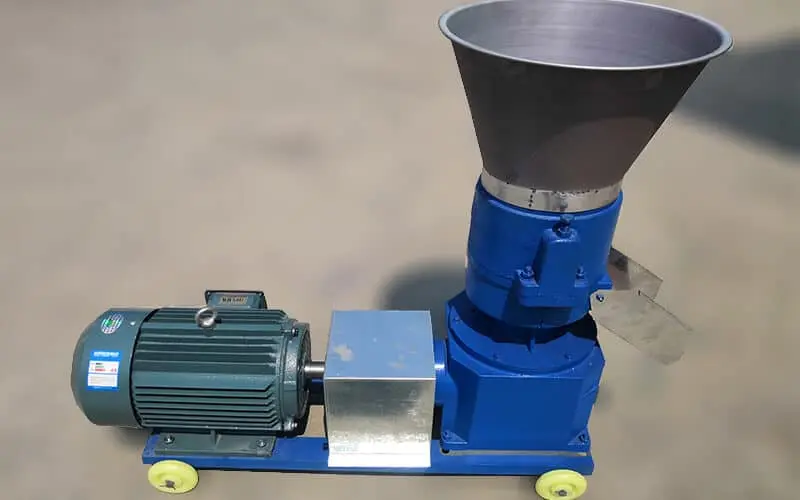

Technical Parameters & Core Technology
Standard 3-5mm Die Sizes for All Growth Stages
The machine comes standard with customizable die sizes to meet physiological needs:
- 3.0mm – 3.5mm: Perfect for Piglets/Nursery Pigs. Enhances swallowing speed and reduces gut stress.
- 4.0mm – 5.0mm: Ideal for Growers and Sows. Matches their chewing strength for maximum intake stability.
- Note: Unlike the 8mm dies used for cattle, our pig feed dies focus on fineness to maximize absorption.
Engineered for Durability & Cost-Efficiency (Low OPEX)
We understand that for SME farms, replacement cost matters. That’s why our core components are designed for maximum value.
- Material: High-Wear Resistant Alloy Cast Iron. Unlike standard fragile cast iron, our alloy formulation adds Manganese (Mn) to enhance toughness.
- Life Span: Capable of processing 80 – 100 tons of feed per die (depending on raw materials).
- Economic Advantage: The cost of replacing our alloy cast iron die is 30%-50% lower than expensive alloy steel dies. We keep standardized dies in stock for immediate dispatch, minimizing your long-term operational costs.
Moderate Compression Ratio
This machine adopts a medium compression ratio structure specifically calculated for grain-based diets (Corn/Soybean/Bran).
- The Result: Pellets are “compact on the outside, soft on the inside.” They withstand transport but dissolve quickly in the pig’s stomach.
- Efficiency: Improves digestible energy (DE) utilization by 5%–12%.
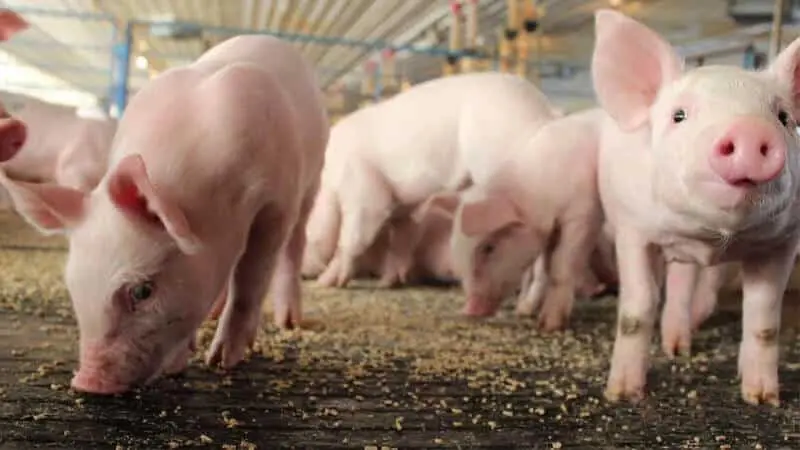
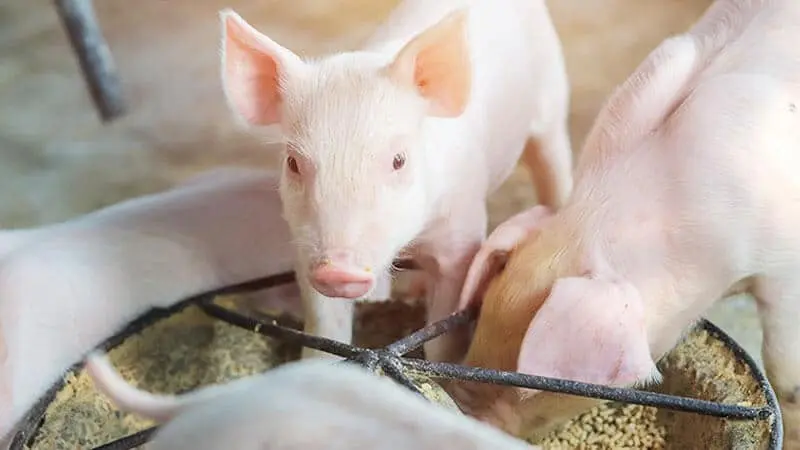
Pig growth stages and pellet size comparison table
To help pig farmers scientifically feed pigs at different growth stages, simply refer to the following pig feed pellet size diameter and feed recommendations.
This table not only clearly lists the recommended pellet sizes but also emphasizes pig feed pelletizer mill process requirements to facilitate high digestibility and pathogen control, meeting biosecurity and feed conversion ratio (FCR) management goals.
| Growth Stage | Recommended Die Size | Raw Material Focus | Process Requirement |
| Piglets / Creep Feed | 2.0mm – 2.5mm | High whey powder, digestible protein | High friction temp for crisp texture to aid digestion. |
| Nursery Pigs | 3.0mm – 3.5mm | Corn, soybean meal, premix | Focus on sterilization (80°C) to prevent diarrhea. |
| Grower / Finisher | 4.0mm – 5.0mm | High-energy grains | Focus on output speed and pellet hardness. |
| Sows (Lactating) | 5.0mm – 6.0mm | High fiber, balanced nutrition | Moderate firmness to increase satiety. |
Swine Feed Production video: 2-8mm Pellet
Economic Benefit Analysis: How can pelleted feed help you save money?
Feed Conversion Ratio (FCR) Improvement Data
Industry data shows that using pelleted feed can typically reduce the feed conversion ratio by about 0.2 (e.g., from 3.0 to 2.8), meaning that for every additional kilogram of pork produced, 0.2 kilograms of feed are consumed less.
For a farm with 500 pigs, this saving in feed costs is enough to purchase 2-3 pig feed processing machine within a year, directly demonstrating improved return on investment (ROI) and optimized operating costs. Investing in an automatic pig feed pellet machine further enhances efficiency and reduces labor costs.
Shorten the slaughter cycle
Pelleted feed, due to its high-temperature cooking process, high starch gelatinization, and low dust content, allows pigs to absorb nutrients more fully and reduces the incidence of disease.
Empirical data shows that pigs fed pelleted feed can be slaughtered 5-7 days earlier than those fed traditionally loose feed, accelerating capital turnover and further improving the economic benefits of pig farms.
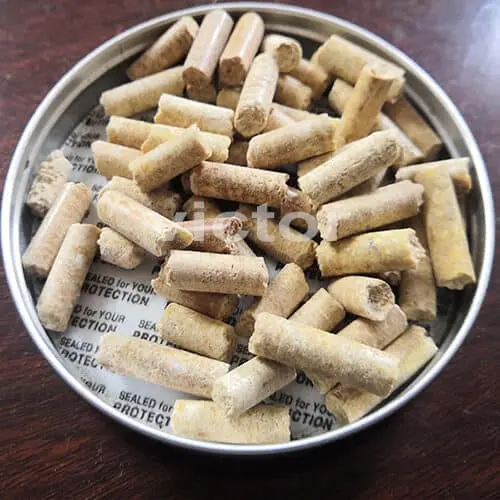
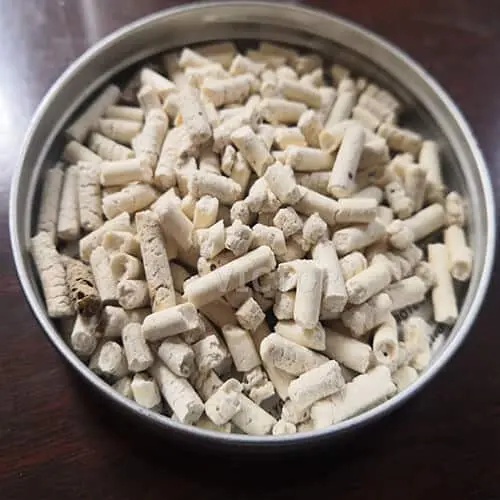
Diesel vs Electric Pig Feed Pellet mill specification
Electric pig feed pelletizer machines are suitable for farms with stable power supply, while diesel pig feed pellet machines provide flexibility for remote or mobile farms. Both types cover outputs from 0.1–2 t/h, allowing small and medium farms to choose the best pig feed pelletizer machine. Models such as the 500kg/h pig feed pellet machine and 1 ton per hour pig feed pellet mill are available depending on farm size.
Diesel pig feed pellet mill
| Model | Diesel Engine Power(HP) | Output(kg/h) | Weight(kg) |
| VTKLP-125 | 4 | 50-80 | 100 |
| VTKLP-150 | 5 | 100-150 | 150 |
| VTKLP-210 | 10 | 200-400 | 260 |
| VTKLP-230 | 15 | 300-500 | 350 |
| VTKLP-260 | 20 | 500-700 | 420 |
| VTKLP-300 | 25 | 700-900 | 650 |
| VTKLP-360 | 30 | 900-1200 | 900 |
| VTKLP-400 | 40-50 | 1200-1500 | 1200 |
Electric pig feed pellet mill
| Model | Electric Power(kw) | Output(kg/h) | Weight(kg) |
| VTKLP-125 | 3 | 50-80 | 80 |
| VTKLP-150 | 4 | 100-150 | 110 |
| VTKLP-210 | 7.5 | 200-400 | 210 |
| VTKLP-230 | 11 | 300-500 | 280 |
| VTKLP-260 | 15 | 500-700 | 300 |
| VTKLP-300 | 18.5 | 700-900 | 500 |
| VTKLP-360 | 22 | 900-1200 | 700 |
| VTKLP-400 | 30-37 | 1200-1500 | 900 |
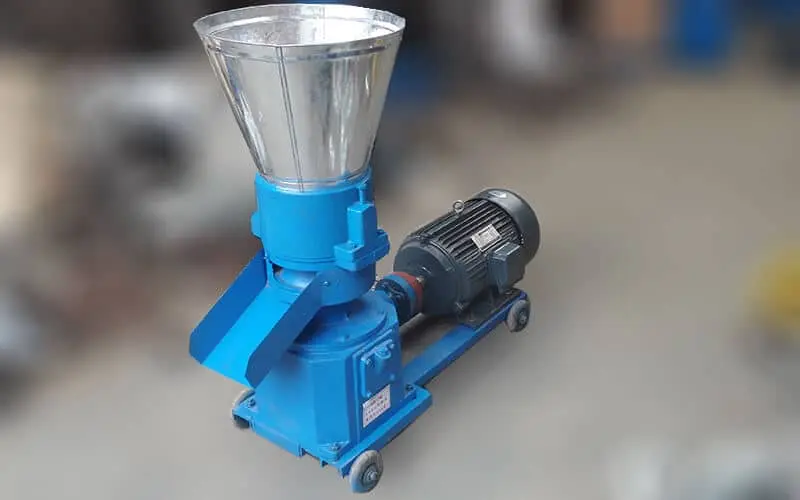
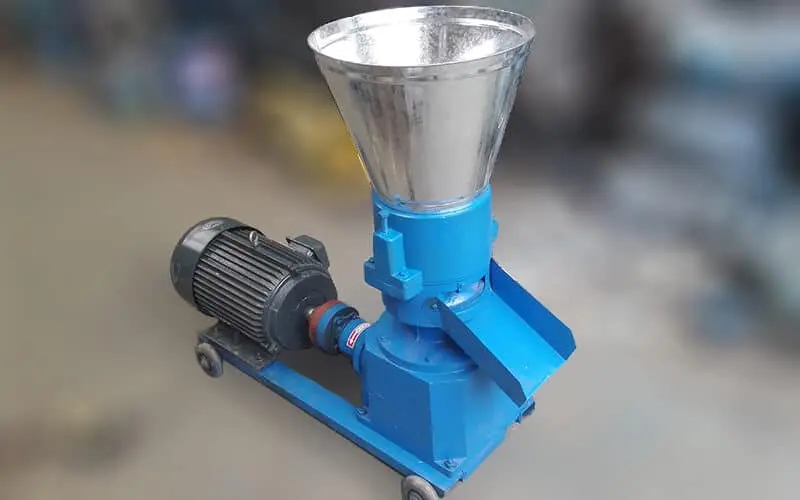
FAQ – For Pig Farm Operations
A: Yes, using a 2.0–2.5mm die, this pig feed pellet machine for home use or small farms can produce fine pellets to improve intake and digestion.
A: Yes, it can be added in moderation (max 15%-20%), as excessive moisture reduces pellet firmness and sterilization. Pigs mainly get energy and protein from grains.
A: Small flat die pig feed pelletizer machines suit family or small pig farms (<100 pigs) with low cost and simple operation.
Ring die pig feed pellet making machines suit medium to large farms, offering better sterilization and feed efficiency, though at higher investment.
A: Consider output, die size (2–8mm), power source (electric or diesel), and farm scale. The best pig feed pellet mill for small farms may differ from medium and large pig feed pellet mills. Always check pig feed pellet machine price and local availability.
A: For SME farms (under 2000 heads), the Flat Die is the superior choice due to:
Lower Initial Investment: Costs 60% less than ring die systems.
Lower Maintenance: Our alloy cast iron dies are cheaper to replace.
Simplicity: No need for a steam boiler operator.
